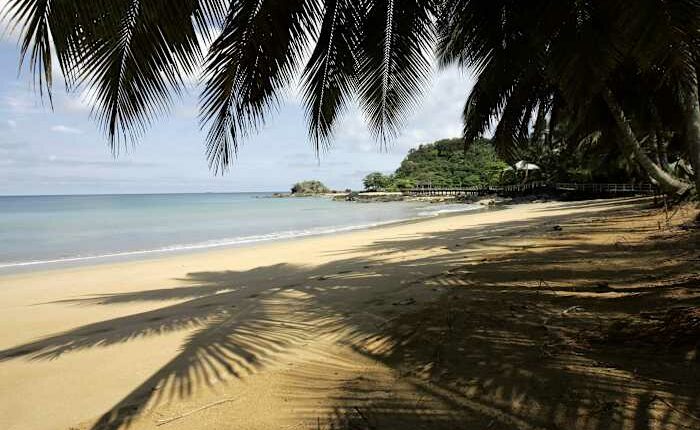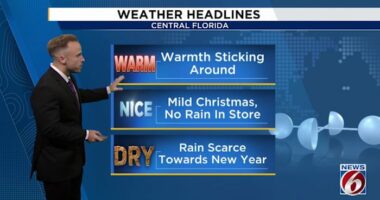Share this @internewscast.com

An Indonesian archipelago that hosts three-fourths of the Earth’s coral species, a segment of Icelandic coast containing 70% of the country’s plant life, and a region along Angola’s Atlantic coast with savannahs, forests, and estuaries are among 26 new sites given UNESCO biosphere reserve status.
The United Nations’ cultural agency notes that these reserves—comprising 785 sites across 142 countries since 1971—house some of our planet’s most abundant and delicate ecosystems. However, biosphere reserves extend beyond purely protected nature areas; they include regions where communities reside and conduct activities. This designation mandates collaboration among scientists, residents, and government officials to balance conservation efforts and research with the local economic and cultural needs.
“The concept of biosphere reserves is that biodiversity conservation is a pillar of socioeconomic development” and can enhance the economy, stated António Abreu, the program’s head, emphasizing that exclusion of local populations from decision-making can lead to conflicts and misunderstandings.
The announcement of the new reserves, situated in 21 countries, was made in Hangzhou, China, on Saturday, where the program also adopted a 10-year strategic action plan that involves examining climate change impacts, according to Abreu.
Biodiversity hot spots
The latest reserves feature a vast area of 52,000 square miles (135,000 square kilometers) within the Raja Ampat region of the Indonesian archipelago, which is habitat to over 75% of the world’s coral species alongside rainforests and scarce endangered sea turtles. The region’s economy relies on fishing, aquaculture, small-scale agriculture, and tourism, as mentioned by UNESCO.
On the western coast of Iceland, the landscape within the Snæfellsnes Biosphere Reserve encompasses volcanic peaks, lava fields, wetlands, grasslands, and the Snæfellsjökull glacier. This 1,460-square-kilometer (564 square-mile) reserve serves as an essential refuge for seabirds, seals, and more than 70% of Iceland’s plant species, including 330 types of wildflowers and ferns. Its over 4,000 inhabitants depend on fishing, sheep farming, and tourism for their livelihood.
And in Angola, the new Quiçama Biosphere Reserve, along 206 kilometers (128 miles) of Atlantic coast is a “sanctuary for biodiversity” within its savannahs, forests, flood plains, estuaries and islands, according to UNESCO. It’s home to elephants, manatees, sea turtles and more than 200 bird species. Residents’ livelihoods include livestock herding, farming, fishing, honey production.
Collaboration is key
Residents are important partners in protecting biodiversity within the reserves, and even have helped identify new species, said Abreu, the program’s leader. Meanwhile, scientists also are helping to restore ecosystems to benefit the local economy, he said.
For example, in the Philippines, the coral reefs around Pangatalan Island were severely damaged because local fishermen used dynamite to find depleted fish populations. Scientists helped design a structure to help coral reefs regrow and taught fishermen to raise fish through aquaculture so the reefs could recover.
“They have food and they have also fish to sell in the markets,” said Abreu.
In the African nation of São Tomé and Príncipe, a biosphere reserve on Príncipe Island led to restoration of mangroves, which help buffer against storm surges and provide important habitat, Abreu said.
Ecotourism also has become an important industry, with biosphere trails and guided bird-watching tours. A new species of owl was identified there in recent years.
This year, a biosphere reserve was added for the island of São Tomé, making the country the first entirely within a reserve.
Climate and environmental concerns
At least 60% of the UNESCO biosphere reserves have been affected by extreme weather tied to climate change, which is caused primarily by the burning of fossil fuels such as coal and gas, including extreme heat and drought and sea-level rise, Abreu said.
The agency is using satellite imagery and computer modeling to monitor changes in coastal zones and other areas, and is digitizing its historical databases, Abreu said. The information will be used to help determine how best to preserve and manage the reserves.
Some biosphere reserves also are under pressure from environmental degradation.
In Nigeria, for example, habitat for a dwindling population of critically endangered African forest elephants is under threat as cocoa farmers expand into Omo Forest Reserve, a protected rainforest and one of Africa’s oldest and largest UNESCO Biosphere Reserves. The forest is also important to help combat climate change.
The Trump administration in July announced that the U.S. would withdraw from UNESCO as of December 2026, just as it did during his first administration, saying U.S. involvement is not in the national interest. The U.S. has 47 biosphere reserves, most in federal protected areas.
___
The Associated Press’ climate and environmental coverage receives financial support from multiple private foundations. AP is solely responsible for all content. Find the AP’s standards for working with philanthropies, a list of supporters and funded coverage areas at AP.org.
Copyright 2025 The Associated Press. All rights reserved. This material may not be published, broadcast, rewritten or redistributed without permission.











